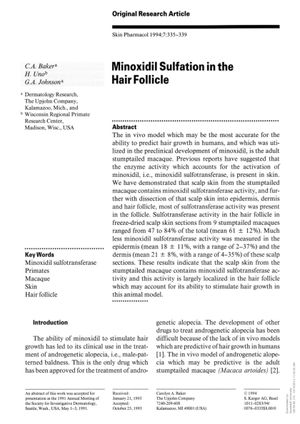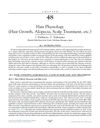Minoxidil Sulfation in the Hair Follicle
January 1994
in “
Skin Pharmacology and Physiology
”

TLDR Minoxidil helps hair growth by activating enzymes in hair follicles.
This study investigated the presence of minoxidil sulfotransferase activity in the scalp skin of stumptailed macaques and found that most of the sulfotransferase activity was present in the hair follicle, indicating that this activity may account for minoxidil's ability to stimulate hair growth in this animal model. The study provides insight into the mechanism of minoxidil's action and its potential use in treating androgenetic alopecia.





